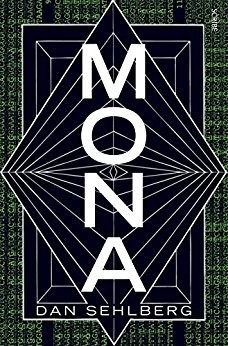
Dissemination
Title of Activity
Puzzle
Description of educational activity
Duration: 90 minutes
Pupils’ age: 15-19
Organization of the class of pupils: group work
The aim of the lesson:
The aim of the activity is to develop reading literacy of pupils, to support their reading skills, to use their competencies to analyse the source text, to compare the present based on their experience and the future based on the text, to reinforce their language skills when verbalizing the results of their work. To analyse the text, to generalize, express insight, or respond by connecting to other texts or situations.
Support materials:
- Puzzle – with some illustrations from the extract and with the text.
- A short story – Mona (one page from the novel). Each student is given a copy of it.
Activities:
Before reading questions: The teachers have some motivational questions: e.g.: What do they think how the computers will affect our future lives. What will be the positive and negative impacts in the future? How far could technology go in revolutionizing our lives?
- Warm up activity (competition) – students work in groups. Each group is given a puzzle with the text which we want them to read and on the puzzle are some illustrations from the excerpt. Their task is to find solve the puzzle, to get the whole text.
- After the puzzle is solved the students give hints about the text. It is important not to read the whole text immediately after solving it. The students try to guess what the story is about.
- The texts are handed out. The students read the short story. Or they can read it from the puzzle.
-
The students log in to the https://kahoot.it/
-
The teachers log in to the https://create.kahoot.it/login
-
Click the “Find kahoot” and find there “Mona Puzzle” (you can add to the filter that it is in English language and it is a quiz for schools). There is a multiple choice activity with comprehension questions about the text.
- The students discuss the story which shows us how the future of the computers can influence us. They can express what they think about the future.
- They make their predictions about the story in groups.
- The students will present the results of their work.
Connection to curriculum
Grade: 3rd grade of bilingual studies
Bilingual curriculum: The study of literature is focused during the third year on reading comprehension of literary texts which are based on the interests of the students which involves sci-fi, too. The aim of the curriculum is to teach students to work with the text, to analyse the texts. Understanding texts, weighing their merits, and utilizing the information they offer are skills that teenagers draw on throughout the curriculum.
Knowledge:
- Summarize
- Develop reading fluency
- Improve reading comprehension
- Recognize main idea and supporting details
Skills:
- Preview and predict
- Use prior knowledge
- Use decoding and vocabulary strategies
- Competences:
- Make connections between fiction and real life or personal experiences
- Be able to visualise material read
- Follow specific instructions and conventions
Competences:
- Make connections between fiction and real life or personal experiences
- Be able to visualise material read
- Follow specific instructions and conventions
Bibliographic reference to be used during the activity
Mona
Dan T. Sehlberg
Brunswick, Victoria Scribe Publications, 2014.
ISBN13: 9781922070975
441 pages

Digital sources
Results
The expected outcomes of the lesson are:
- The students will be able to understand the text and to compare the technology nowadays with the technology in the future.
- They make predictions.
- To offer observations, make connections, speculate, interpret, and raise questions in response to the text.
Recommendations
Both the teaching method and the text can help in increasing students’ interest in reading. This text describes the possible future of the technology and how the computers can influence our life both in negative and positive ways. It can help students to discuss its positives and negatives.
The teacher monitors the students so as to make sure they cooperate effectively.
Contact
X gimnazija ''Ivan Supek''
Ul. Vjekoslava Klaića 7
10000
Zagreb
E-mail: partners@handbook4rspreaders.org











